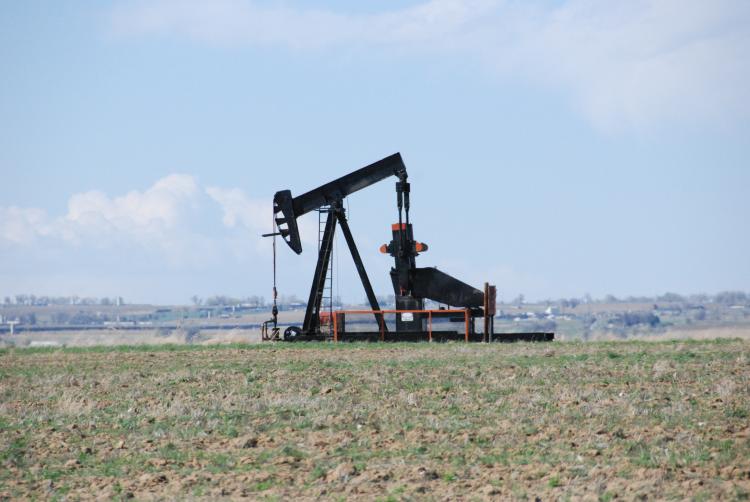New oil and gas development techniques like horizontal drilling and high-volume hydraulic fracturing have dominated public concern in recent years about groundwater contamination in oil and gas basins. However, older vertical wells are more likely to cause groundwater contamination than newer wells, according to a new study from CU Boulder.
The paper, published today in the journal Environmental Science & Technology, looked at the frequency of well integrity issues in Colorado’s Wattenberg Field, the fourth most productive crude oil field and ninth most productive gas field in the U.S. The Wattenberg Field is located in central Colorado in the Denver Basin.
The study examined publically available data from the Colorado Oil and Gas Conservation Commission (COGCC), a regulatory division of the state’s Department of Natural Resources, and was funded entirely by the National Science Foundation’s AirWaterGas Sustainability Research Network, based in Boulder.
Specifically, researchers from the Department of Civil, Environmental and Architectural Engineering (CEAE) and Institute of Arctic and Alpine Research examined data collected on surface casing pressure to identify oil and gas wells with integrity issues.
Surface casing is installed from the surface to below the deepest aquifers in order to protect groundwater. If the production pipe or a borehole in cement develops cracks, gas accumulates inside the surface casing, building up pressure. In some cases, the gas can eventually seep out of the casing and into groundwater or the atmosphere.
“Colorado is the only state we were able to identify that makes surface casing pressure data publicly available,” said Hari Rajaram, a CEAE professor and co-author of the study. “Considering the value of surface casing pressure data in identifying and remediating problematic wells, the COGCC’s testing and monitoring regulations could serve as a model for other regulatory agencies and states.”
The researchers found that new horizontal wells develop surface casing pressure more frequently than older vertical wells, which confirms findings from other studies.
The majority of new horizontal wells in the Wattenberg Field have been built with surface casing that extends deeper than state regulations, reducing the likelihood that these wells will contaminate groundwater. This is not the case for older vertical wells with short surface casings that were constructed before current state regulations were changed to require deeper cementing.
While occurrence of surface casing pressure in new horizontal wells is a concern and should continue to be monitored, the study recommends that companies and policymakers focus on fixing older wells with shallower surface casing.
“They should strive to bring legacy wells up to current standards,” said Greg Lackey, a post-graduate researcher in CEAE and lead author of the study. “Surface casing pressure is very easy to measure and regular testing on more wells will help to identify and remediate problematic wells.”
The researchers examined surface casing pressure readings from 3,923 wells in the Wattenberg Field. Of those, 270 were found to exceed critical surface casing pressure. While wells that exceed critical surface casing pressure are not necessarily causing methane release into aquifers, it does put them at higher risk for contaminating groundwater, Lackey said.
Surface casing pressure has previously been examined in offshore wells, but this is believed to be the first study to look directly at pressure readings in onshore wells.
The research complements a 2016 study by the AirWaterGas Sustainability Research Network that looked at the frequency of methane occurrence in drinking water aquifers due to natural gas leakage.

An oil well in Colorado. Photo: Maarten1979 / Flickr.



